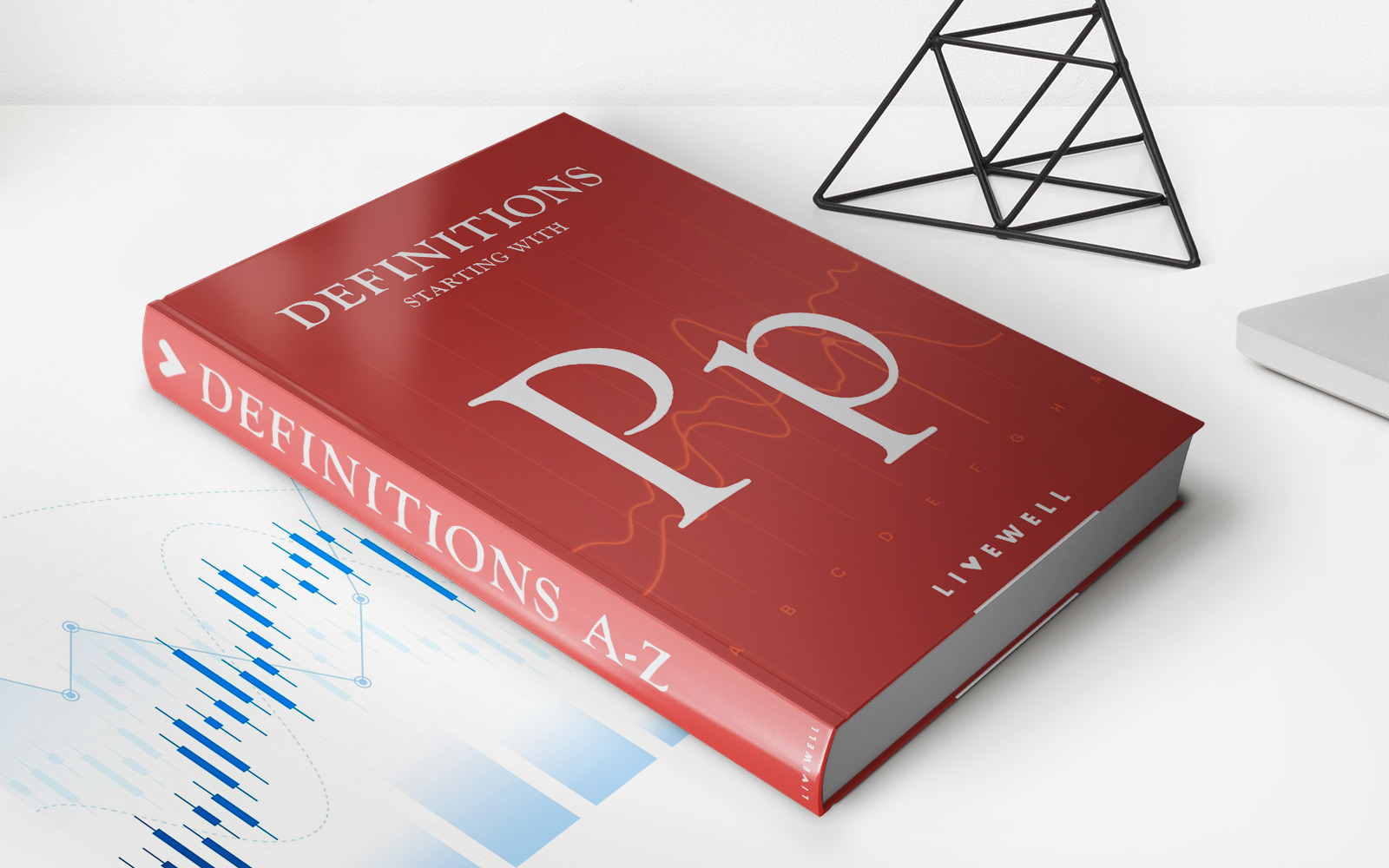Home>Finance>What Is The Lifetime Maximum In Dental Insurance?


Finance
What Is The Lifetime Maximum In Dental Insurance?
Modified: December 30, 2023
Learn about the lifetime maximum in dental insurance and how it impacts your finances. Find out how to navigate this important aspect of your coverage.
(Many of the links in this article redirect to a specific reviewed product. Your purchase of these products through affiliate links helps to generate commission for LiveWell, at no extra cost. Learn more)
Table of Contents
- Introduction
- Definition of Lifetime Maximum in Dental Insurance
- Purpose and Importance of Lifetime Maximum
- Calculation and Explanation of Lifetime Maximum
- Factors Affecting Lifetime Maximum
- Examples of Lifetime Maximum in Dental Insurance Policies
- Benefits and Limitations of Lifetime Maximum
- How to Evaluate and Compare Lifetime Maximums in Dental Insurance Plans
- Tips for Maximizing Dental Insurance Benefits under Lifetime Maximum
- Conclusion
Introduction
Welcome to the world of dental insurance! If you’re new to the realm of dental coverage, it’s important to familiarize yourself with key terms and concepts to make informed decisions about your dental health. One such term is the “lifetime maximum” in dental insurance, which plays a significant role in determining the extent of coverage you can receive over your lifetime.
Dental insurance is designed to help individuals manage the cost of dental care by providing coverage for various procedures and treatments. However, dental insurance plans often come with limitations, and the lifetime maximum is one of them.
In this article, we’ll explore what the lifetime maximum in dental insurance is, why it is important, how it is calculated, and what factors can influence it. We’ll also provide examples of lifetime maximums and offer tips on how to evaluate and compare lifetime maximums when choosing a dental insurance plan.
Understanding the lifetime maximum can empower you to make informed decisions about your dental insurance coverage and make the most of your benefits. So let’s dive in!
Definition of Lifetime Maximum in Dental Insurance
The lifetime maximum in dental insurance refers to the maximum amount of money your insurance plan will pay for covered dental services over the course of your lifetime. It represents the upper limit on the total benefits you can receive from your dental insurance policy.
Dental insurance providers set different lifetime maximums for their policies, and these limits can vary widely. A higher lifetime maximum means that you have a greater amount of dental coverage available to you throughout your life. Conversely, a lower lifetime maximum may result in limitations on the amount of coverage you can receive for dental treatments.
It’s important to note that the lifetime maximum applies to specific categories of dental services, such as preventive, basic, and major procedures. Each category may have its own maximum limit, or there may be an overall lifetime maximum that applies to all categories combined.
For example, let’s say your dental insurance policy has a lifetime maximum of $1,500 for preventive services, $2,000 for basic procedures, and $4,000 for major treatments. This means that once you reach these respective maximums, your dental insurance will no longer pay for services in those categories, and you would be responsible for the costs beyond these limits.
It’s essential to understand the specific terms and conditions of your dental insurance policy regarding the lifetime maximum to ensure you can make the most of your coverage.
Purpose and Importance of Lifetime Maximum
The purpose of having a lifetime maximum in dental insurance is to provide a financial safeguard for insurance providers and help manage the costs of dental care. By setting a cap on the benefits, insurance companies can control their liabilities while still offering coverage to policyholders.
From the perspective of the insured, understanding the importance of the lifetime maximum is crucial for effective financial planning and decision-making when it comes to dental treatments. Here’s why it is important:
1. Budgeting for Dental Expenses:
Knowing the lifetime maximum helps individuals anticipate and plan for their dental expenses. It provides a clear understanding of the maximum coverage available and allows for budgeting accordingly.
2. Managing Long-term Dental Care:
The lifetime maximum helps individuals manage their long-term dental care needs. By having a limit on coverage, insurance providers ensure that beneficiaries do not solely rely on insurance for all their dental treatments.
3. Encourages Preventive Care:
Lifetime maximums often have separate limits specifically for preventive services, such as cleanings and exams. This encourages individuals to prioritize preventive care, leading to better oral health outcomes and potentially reducing the need for costly dental procedures in the future.
4. Provides Financial Protection:
The lifetime maximum acts as a safety net for individuals by protecting them from exceptionally high dental expenses. Even if a costly treatment is necessary, knowing the lifetime maximum can help individuals plan and budget accordingly.
5. Enables Plan Customization:
Insurance providers offer a variety of plans with different lifetime maximums to accommodate the diverse needs of individuals. Understanding the lifetime maximum allows individuals to select a plan that aligns with their expected dental care requirements.
Overall, the lifetime maximum serves to balance the financial interests of insurance providers and insured individuals, ensuring that dental insurance remains accessible, affordable, and sustainable in the long run.
Calculation and Explanation of Lifetime Maximum
The calculation of the lifetime maximum in dental insurance can vary depending on the insurance provider and the specific policy. However, here’s a general explanation of how the lifetime maximum is determined:
1. Maximum Benefit Amount: Insurance policies typically specify a maximum benefit amount per year or policy term. This is the total amount of coverage available to an individual for dental services within a specific period. The lifetime maximum is usually a multiple of this maximum benefit amount.
2. Duration: The lifetime maximum refers to the total benefit amount that can be utilized over a person’s lifetime. It takes into account the number of years an individual is expected to have dental insurance coverage.
3. Category-Specific Limits: The lifetime maximum may also have separate limits for different categories of dental services, such as preventive, basic, and major procedures. Each category may have its own maximum amount that contributes to the overall lifetime maximum.
Insurance providers typically calculate the lifetime maximum by multiplying the maximum benefit amount by the expected number of years of coverage and considering any category-specific limits.
For example, if a dental insurance policy has a maximum benefit amount of $2,000 per year and an expected coverage duration of 20 years, the initial lifetime maximum would be $40,000. However, if there are individual category-specific limits, such as $1,000 for preventive services and $5,000 for major treatments, these amounts would contribute to the overall lifetime maximum based on the utilization within each category.
It’s essential to review your dental insurance policy to determine how the lifetime maximum is calculated and to understand any category-specific limits that may apply. This information will help you comprehend the scope of coverage and plan your dental care accordingly to make the most of your benefits.
Factors Affecting Lifetime Maximum
The lifetime maximum in dental insurance can be influenced by several factors, including:
1. Type of Insurance Plan:
The type of dental insurance plan you have can impact the lifetime maximum. For instance, individual plans may have different maximums compared to group plans offered by employers. Self-funded plans may also have different lifetime maximums depending on how they are structured.
2. Insurance Provider:
Insurance companies have their own guidelines for setting lifetime maximums. Some providers may offer higher lifetime maximums as part of their policies, while others may have lower maximums to manage costs and premiums.
3. Market Conditions:
Insurance providers consider market conditions and trends when determining lifetime maximums. Factors such as rising dental treatment costs, changes in reimbursement rates, and overall economic conditions can influence the maximum amount they are willing to offer.
4. Policy Features:
Specific features within your dental insurance policy can affect the lifetime maximum. For example, policies with higher premiums may provide increased lifetime maximums to offer more comprehensive coverage.
5. Geographic Location:
Geographic location can impact lifetime maximums as dental treatment costs can vary by region. Areas with higher costs of living and higher dental expenses may have higher lifetime maximums to accommodate those expenses.
6. Category-Specific Limits:
As mentioned earlier, some plans may have separate category-specific limits within the lifetime maximum. These limits can be influenced by factors such as the importance of preventive care, the prevalence of specific dental procedures, and the average costs associated with those procedures.
It’s important to review your dental insurance policy or consult with your insurance provider to understand the specific factors that may affect the lifetime maximum in your coverage. By being aware of these factors, you can better assess your dental needs and choose a plan that aligns with your requirements and expectations.
Examples of Lifetime Maximum in Dental Insurance Policies
Let’s take a look at a few examples of lifetime maximums in dental insurance policies to understand how they can vary:
Example 1:
Insurance Provider: ABC Dental Insurance
Lifetime Maximum: $1,000 per year, $3,000 overall
Category-Specific Limits: $500 for preventive, $1,000 for basic, $1,500 for major procedures
In this example, the dental insurance policy has a total lifetime maximum of $3,000. It further breaks down the maximum limit into category-specific amounts, such as $500 for preventive services, $1,000 for basic procedures, and $1,500 for major treatments.
Example 2:
Insurance Provider: XYZ Dental Insurance
Lifetime Maximum: $2,500 per year, no overall limit
Category-Specific Limits: $1,000 for preventive, no limits for basic or major procedures
In this case, the dental insurance policy has a generous maximum benefit amount of $2,500 per year, with no specific lifetime overall limit stated. However, there is a category-specific limit of $1,000 for preventive services. Basic and major procedures do not have specific maximum limits, indicating that coverage for those categories may be provided without an overall lifetime cap.
Example 3:
Insurance Provider: DEF Dental Insurance
Lifetime Maximum: $5,000 overall
Category-Specific Limits: No category-specific limits
In this example, the dental insurance policy has a lifetime maximum of $5,000 overall. However, there are no category-specific limits provided, indicating that the maximum applies to all types of dental services equally.
These examples demonstrate the variation in lifetime maximums among different dental insurance policies. It’s important to review the terms and conditions of your specific policy, including the maximum benefit amounts and any category-specific limits, to understand the extent of coverage available to you.
Benefits and Limitations of Lifetime Maximum
The lifetime maximum in dental insurance comes with both benefits and limitations. Let’s explore them in more detail:
Benefits:
1. Financial Protection:
The lifetime maximum provides a financial safeguard by limiting your out-of-pocket expenses for dental care. It ensures that you have coverage for a significant portion of your dental treatments and protects you from potentially high costs.
2. Cost Control for Insurance Providers:
The lifetime maximum allows insurance providers to manage their costs by setting a cap on the amount they are liable to pay for dental services. It helps maintain the affordability and sustainability of dental insurance plans.
3. Fair Premiums:
By having a lifetime maximum, insurance providers can determine premiums based on the coverage amount and potential expenses. This helps ensure that premiums remain fair and affordable for policyholders.
4. Support for Preventive Care:
Many dental insurance policies prioritize preventive services by setting separate, lower lifetime maximum limits for preventive care. This encourages individuals to seek regular check-ups, cleanings, and other preventive treatments, promoting better oral health and potentially reducing the need for more extensive procedures.
Limitations:
1. Coverage Exhaustion:
Once the lifetime maximum is reached, the insurance provider will no longer cover any additional dental services. This can limit your coverage for necessary treatments, potentially resulting in higher out-of-pocket costs.
2. Inadequate Coverage for Extensive Treatments:
If you require complex or costly dental procedures, the lifetime maximum may not provide sufficient coverage. In such cases, you may need to explore additional financing options to cover the remaining costs.
3. Limited Coverage for Major Procedures:
Some policies may have lower lifetime maximum limits for major procedures, which can result in limited coverage for more extensive dental treatments, such as root canals, crowns, or implants.
4. Differences Across Insurance Providers:
Insurance providers can have varying lifetime maximum limits, category-specific limits, and coverage conditions. This means that the coverage and benefits offered can differ between different insurance providers and policies.
Understanding the benefits and limitations of the lifetime maximum is essential for making informed decisions about your dental insurance. Evaluating your dental needs, considering potential treatment costs, and comparing different policies can help you choose coverage that aligns with your requirements and provides optimal financial protection.
How to Evaluate and Compare Lifetime Maximums in Dental Insurance Plans
When it comes to evaluating and comparing lifetime maximums in dental insurance plans, it’s important to consider the following factors:
1. Determine Your Dental Needs:
Assess your dental health and anticipate any potential treatments or procedures you may require in the future. Consider the frequency of visits, the likelihood of major treatments, and the importance of preventive care in your dental care routine.
2. Understand the Lifetime Maximum:
Review the lifetime maximum stated in each dental insurance plan you are considering. Take note of any category-specific limits and overall maximums. Ensure that the limits are reasonable and align with your anticipated dental care needs.
3. Consider Other Coverage Limits:
In addition to the lifetime maximum, review other coverage limits in the insurance plan, such as annual maximums and copayment requirements. These limits can affect the overall financial coverage you receive for dental treatments.
4. Compare Costs and Premiums:
Evaluate the costs of each dental insurance plan, including monthly premiums, deductibles, and copayments. Consider how the costs align with the coverage provided, including the lifetime maximum. Aim to find a balance between affordability and comprehensive coverage.
5. Check Network Providers:
Review the network of dentists and dental providers affiliated with each insurance plan. Ensure that there are sufficient providers in your area and that the network includes dentists you trust or prefer to visit.
6. Research Customer Feedback and Reputation:
Read reviews and gather feedback from current or past customers of the dental insurance plans you are considering. This can give you insights into the quality of service, ease of claims processing, and customer satisfaction levels.
7. Consult with Dental Professionals:
Discuss your dental insurance options with your dentist or dental professionals. They may be able to provide guidance and insights based on their experience working with different insurance plans and can help you understand which plan may suit your needs best.
By carefully evaluating and comparing the lifetime maximums and other aspects of dental insurance plans, you can make an informed decision and choose a plan that provides adequate coverage for your dental care needs.
Tips for Maximizing Dental Insurance Benefits under Lifetime Maximum
While dental insurance plans have lifetime maximums, there are several ways to maximize your benefits and make the most of your coverage. Consider the following tips:
1. Understand Your Coverage:
Thoroughly review your dental insurance policy and understand the details of your coverage, including the lifetime maximum and any category-specific limits. This will help you better plan for your dental needs and allocate your benefits accordingly.
2. Prioritize Preventive Care:
Since many insurance plans set lower limits for preventive services, prioritize regular check-ups, cleanings, and examinations. By maintaining good oral hygiene and addressing any potential issues early on, you can reduce the need for more expensive treatments later.
3. Schedule Treatment Strategically:
If you anticipate needing multiple treatments, strategically schedule them within the coverage period of your dental insurance plan. By planning treatments in advance, you can maximize your coverage and spread out the costs over time.
4. Optimize Your Dental Benefits:
Utilize the benefits available to you under your lifetime maximum. Make sure to schedule appointments and receive necessary treatments before reaching the maximum limit to maximize the coverage provided by your insurance plan.
5. Explore Flexible Spending Accounts (FSAs) or Health Savings Accounts (HSAs):
If your employer offers FSAs or HSAs, consider utilizing these accounts to set aside pre-tax dollars for your dental expenses. This can help supplement the coverage provided by your insurance and offset any out-of-pocket costs.
6. Negotiate Fees:
When facing extensive or costly dental treatments, don’t hesitate to discuss the fees with your dental provider. In some cases, they may be willing to negotiate or provide discounts, allowing you to make the most of your insurance benefits.
7. Review and Reassess:
Regularly review your dental insurance policy to check if there have been any changes to the lifetime maximum or other coverage limits. Reassess your dental needs and consider if your current plan still meets your requirements.
By following these tips, you can optimize your dental insurance benefits under the lifetime maximum and make informed decisions about your oral healthcare while maximizing your coverage.
Conclusion
The lifetime maximum in dental insurance serves as an important factor to consider when choosing a dental insurance plan. It represents the maximum amount of coverage you can receive for dental services over the course of your lifetime. Understanding the lifetime maximum and its implications can help you make informed decisions about your dental insurance coverage and maximize your benefits.
While the lifetime maximum sets a cap on coverage, it also offers benefits such as financial protection, cost control for insurance providers, and support for preventive care. However, it’s crucial to be aware of the limitations, including coverage exhaustion, limited coverage for extensive treatments, and potential differences across insurance providers.
To evaluate and compare lifetime maximums in dental insurance plans, consider factors such as your dental needs, other coverage limits, costs, network providers, customer feedback, and advice from dental professionals. By doing so, you can select a plan that aligns with your requirements and provides comprehensive coverage.
To make the most of your dental insurance benefits under the lifetime maximum, understand your coverage, prioritize preventive care, schedule treatments strategically, optimize your dental benefits, consider flexible spending accounts, negotiate fees when necessary, and regularly review and reassess your policy.
In conclusion, by gaining a clear understanding of the lifetime maximum and meticulously evaluating dental insurance plans, you can ensure that your dental needs are adequately covered and optimize your insurance benefits for a lifetime of oral health.














